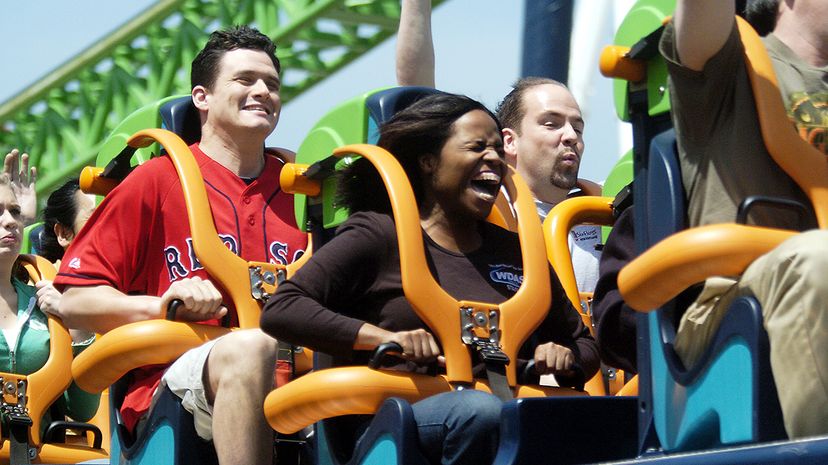Roller Coaster Forces

In the last few sections, we looked at the forces and machinery that send roller coasters rocketing around their tracks. As the trains move over the hills, valleys and loops of the track, the forces on the riders change constantly, pulling them in all directions. But why is this rollicking movement so enjoyable (or, for some people, so nauseating)?
To understand the sensations you feel in a roller coaster, let's look at the basic forces at work on your body. Wherever you are on Earth, gravity is pulling you down toward the ground. But the force you actually notice isn't this downward pull, it's the upward pressure of the ground underneath you. The ground stops your descent to the center of the planet. It pushes up on your feet, which push up on the bones in your legs, which push up on your rib cage and so on. This is the feeling of weight. At every point on a roller coaster ride, gravity is pulling you straight down.
Advertisement
The other force acting on you is acceleration. When you are riding in a coaster car that is traveling at a constant speed, you only feel the downward force of gravity. But as the car speeds up or slows down, you feel pressed against your seat or the restraining bar.
You feel this force because your inertia is separate from that of the coaster car. When you ride a roller coaster, all the forces we've discussed are acting on your body in different ways.
Newton's first law of motion states that an object in motion tends to stay in motion. That is, your body will keep going at the same speed in the same direction unless some other force acts on you to change that speed or direction. When the coaster speeds up, the seat in the cart pushes you forward, accelerating your motion. When the cart slows down, your body naturally wants to keep going at its original speed. The harness in front of you accelerates your body backward, slowing you down. We'll talk more about the forces on your body on the next page.